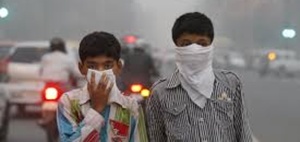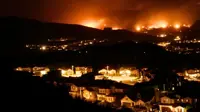Toxic air killing 600,000 children across the world every year: Unicef
31 Oct 2016
Air pollution is a major contributing factor in the deaths of around 600,000 children under five every year as almost one in seven of the world's 300 million children live in areas with the most toxic levels of outdoor air pollution – six or more times higher than international guidelines – reveals a new UNICEF report.

The study, 'Clear the Air for Children', uses satellite imagery to show for the first time how many children are exposed to outdoor pollution that exceeds global guidelines set by the World Health Organisation (WHO), and where they live across the globe.
The findings come a week ahead of the COP 22 in Marrakesh, Morocco, where UNICEF is calling on world leaders to take urgent action to cut air pollution in their countries.
''Air pollution is a major contributing factor in the deaths of around 600,000 children under five every year – and it threatens the lives and futures of millions more every day,'' said UNICEF executive director Anthony Lake. ''Pollutants don't only harm children's developing lungs – they can actually cross the blood-brain barrier and permanently damage their developing brains – and, thus, their futures. No society can afford to ignore air pollution.''
The satellite imagery confirms that around 2 billion children live in areas where outdoor air pollution, caused by factors such as vehicle emissions, heavy use of fossil fuels, dust and burning of waste, exceeds minimum air quality guidelines set by the World Health Organisation. South Asia has the largest number of children living in these areas, at 620 million, with Africa following at 520 million children. The East Asia and Pacific region has 450 million children living in areas that exceed guideline limits.
The study also examines the heavy toll of indoor pollution, commonly caused by use of fuels like coal and wood for cooking and heating, which mostly affects children in low-income, rural areas.
Together, outdoor and indoor air pollution are directly linked to pneumonia and other respiratory diseases that account for almost one in 10 under-five deaths, making air pollution one of the leading dangers to children's health.
Children are more susceptible than adults to both indoor and outdoor air pollution as their lungs, brains and immune systems are still developing and their respiratory tracks are more permeable.
Young children also breathe faster than adults, and take in more air relative to their body weight. The most disadvantaged, who already tend to have poorer health and inadequate access to health services, are the most vulnerable to the illnesses caused by polluted air.
UNICEF is asking world leaders attending COP 22 to take four urgent steps in their countries to protect children from air pollution.
Towards this Unicef has called upon all countries to reduce pollution, increase children's access to healthcare, minimise children's exposure to pollution and monitor air pollution.
''We protect our children when we protect the quality of our air. Both are central to our future,'' Lake said.



.webp)
.webp)

.webp)
.webp)

























